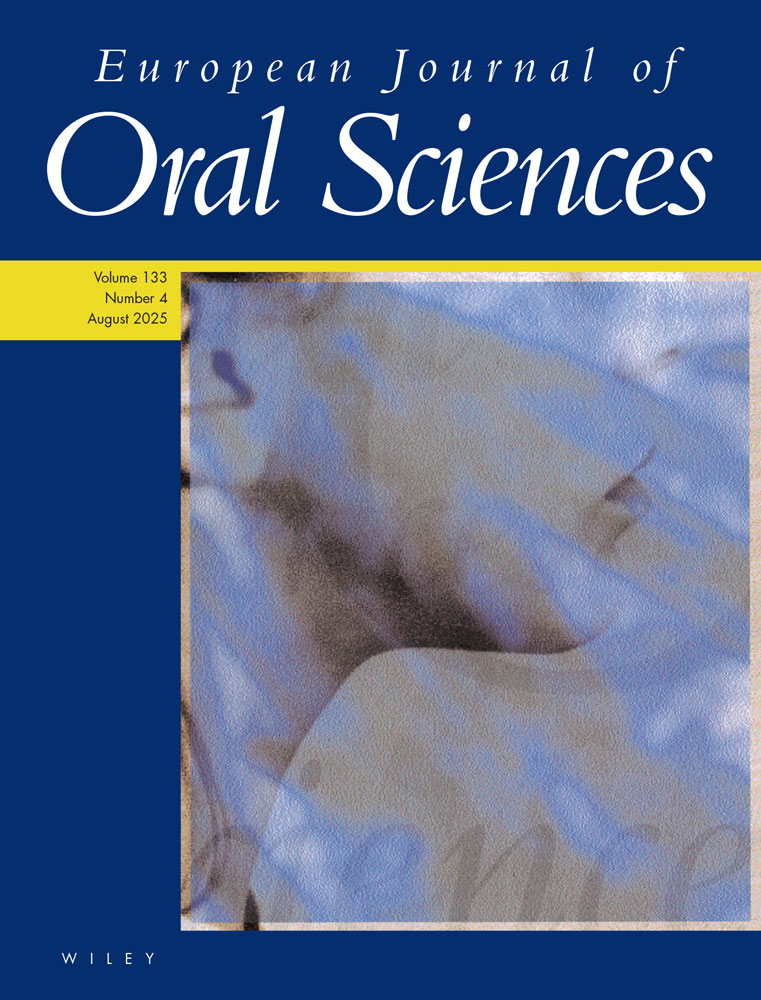Influence of restraint stress on ligature-induced periodontitis in rats
Abstract
The influence of stress on periodontal breakdown in Wistar rats was analyzed during experimental periodontitis, induced by placing silk ligatures around the maxillary right second molar teeth. The rats were divided into three groups with 10 animals in each; the first group was exposed to restraint stress for 12 h d−1 for a period of 4 wk; the second group was exposed to restraint stress for 2.5 h d−1 for a period of 4 wk; the third group served as a control group. Ligation for 4 wk resulted in an accelerated periodontal degradation, whereas the restraint stress by itself had no significant effect. Combined stress and ligation resulted in a significantly higher attachment loss and alveolar bone resorption than either treatment alone, while no differences were seen between the two stress regimens. After 4 wk, a reduced body weight was found in both restrained groups of rats and a reduced weight of the thymus in the rats restrained for 12 h d−1, while no changes were observed in the weight or composition of the suprarenal glands. We conclude that stress alone does not result in periodontal disease but may modulate the pathophysiological processes of already present periodontal inflammation, resulting in accelerated degradation of periodontal tissues.




